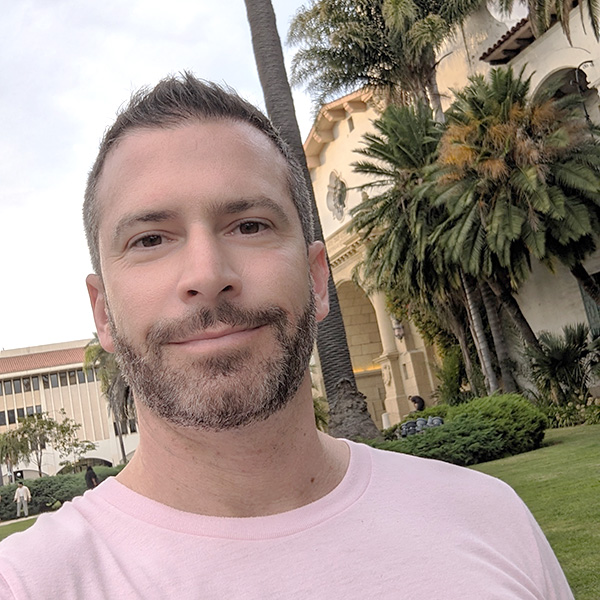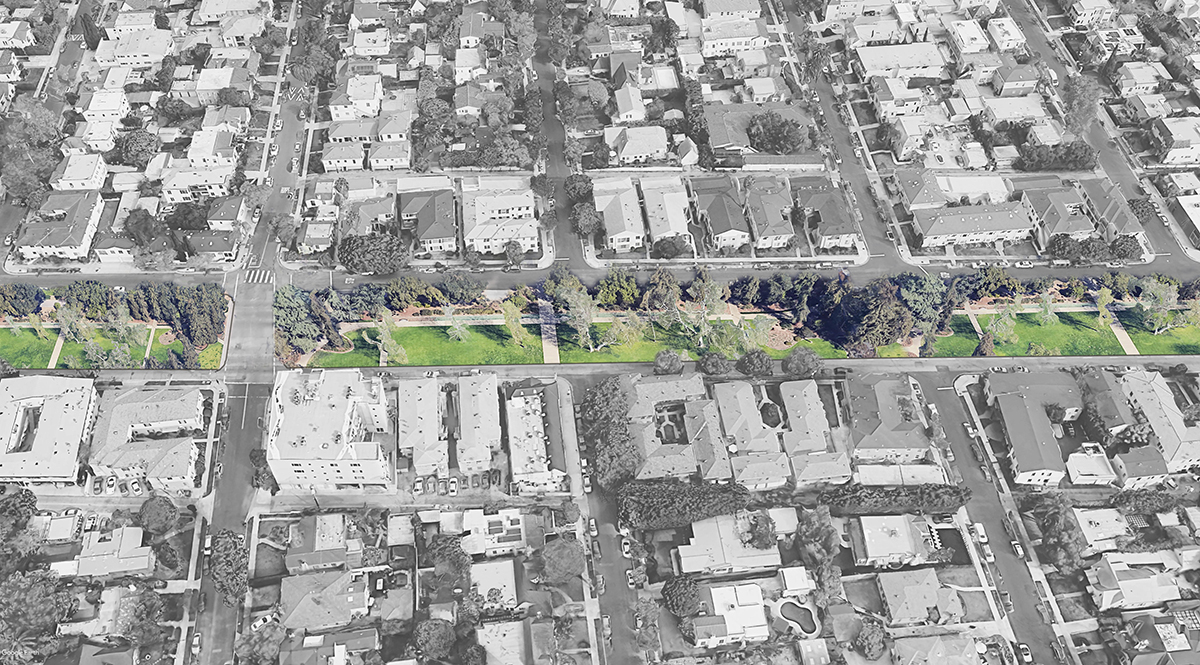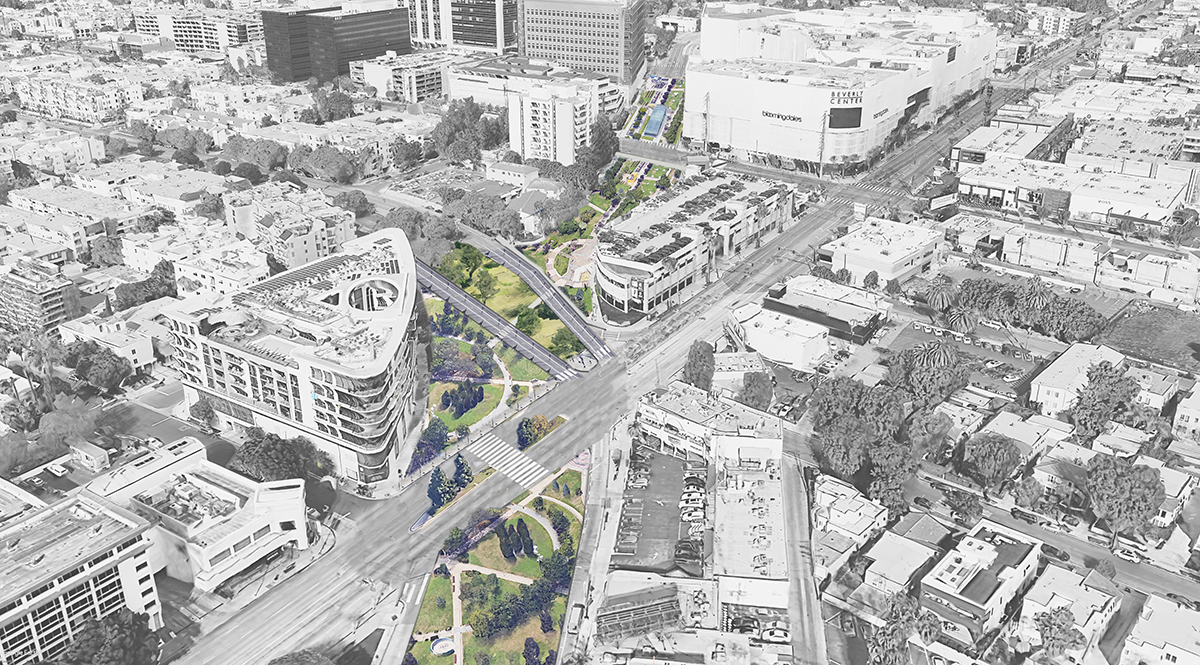
AIA|LA ARCHITECTS IN ACTION:
Questions for Michael Wacht, AIA, NCARB – Founder, IntuArch
Personal Background and Core Values:
What initially drew you to the field of architecture, and how has your perspective on design evolved over your career?
Throughout my professional journey, I’ve consistently been fascinated by spatial configuration and our human perceptions of the built environment. What began earlier in my career as a more practical application of developer-led projects has evolved into an intimate understanding of how community, context, and configuration serve a united purpose in creating effective and resilient Architecture.
Design Perspective:
Can you describe your design philosophy and how it balances creativity with functionality?
The best design solutions of course combine strategies that embrace both speculative ideation and pragmatism. By absorbing an iterative design process that reinterprets precedents analytically, I can create solutions that inspire and comfort while simultaneously managing the complexities of stakeholder ecosystems.
Vision and Inspiration: What initially inspired the vision for San Vicente Park, and how does this project align with your broader vision for urban design and green spaces in Los Angeles?
The original concept is based on observations of the neighborhoods around my home during the earlier stages of the pandemic. Stuck near home, Angelenos naturally began using the public spaces of their communities for strolling and safely communing. My particular area of the city lacks a public park within walking distance. As part of my role as a Board Member of the local nonprofit Destination: Pico, we noticed the natural movement of residents along connecting streets and successfully applied for and installed two Slow Streets through the DOT program. I began to think more broadly about how to reallocate public space nearby. Once the Metro K Line extension began progressing further that year with community outreach and an almost parallel route option, it became clear that San Vicente Boulevard was potentially an oversized highway, splitting communities and creating a geographic barrier for safe access near new stations.
Community Engagement: How will you ensure a robust and inclusive community engagement process throughout the planning and design phases of San Vicente Park?
Key to the success of any project in modern Los Angeles, robust outreach is essential to the curation and design process for infrastructure. My involvement as Co-Chair of my neighborhood council Land Use Committee has taught me how to incorporate stakeholder involvement as an important asset and tool to make projects excel. So far, we’ve managed to incorporate feedback via two ongoing collections: the “Frequently Asked Questions” page on the website, and a collection of “Amenities” that neighbors are interested in seeing incorporated in a new park. I would add that by proposing new park space to an area of the city growing concerned about densification, stakeholder feedback has been almost entirely positive at community presentations.
Phasing and Prioritization: Given the significant length of the proposed park, can you elaborate on the potential phasing of the project and which sections might be prioritized for initial development?
Great question! That may depend on coordination with Metro work, or if the two council offices along the proposed route see this project as a priority regardless of the K-Line extension. Considering the length I would imagine phasing is necessary, though closing the boulevard at one time would make more progress towards realigning vehicular traffic patterns more quickly, a sort of “rip the band-aid off solution.”
Traffic and Accessibility: How will San Vicente Park balance the need for green space with maintaining essential access for residents and businesses along the current roadway?
Adjacent access is twofold: (1) The project is proposed to have a single lane in each direction on the far north and south sides of the current alignment, in conjunction with comparable amounts of parallel parking spaces. These lanes of traffic would end at major intersections with turn-only lanes and other disincentives for contiguous travel. (2) The boulevard currently incorporates a substantial landscaped median of old-growth trees which already blocks cross traffic into multiple block sections. The proposed park would not change any of these cross streets, effectively having little to no change to traffic flow in these directions.
Funding and Partnerships: What funding strategies are being considered to bring San Vicente Park to fruition, and are there potential partnerships with public or private entities that could be explored?
Potential funding is a constantly evolving answer. Our hope is that a feasibility study could provide a list of funding and policy opportunities. Based on similar projects across the city, we estimate costs in the $200 million range. While an easy answer for funding would be government resources at the city, county, state, and federal levels, this is incredibly nuanced. There are grants available for projects that reconnect communities or provide water infiltration and other environmental benefits. Another resource may be private funding, as the northern half of the proposed park meanders through relatively wealthy communities, including a small stretch within the City of Beverly Hills. Household names will abut the park, including Cedars-Sinai, Beverly Center, and Caruso Development. We have begun outreach efforts to these and many more private property owners to see how the value created by such an urban amenity can garner support.
Sustainability and Resilience: How will the design of San Vicente Park incorporate principles of sustainability and resilience to address future challenges like climate change?
I may have to leave this answer to Civil Engineers and Landscape Architects, but our goal is to incorporate best practices for water use, water infiltration, and urban shade. In addition, we hope to incorporate newly popular concepts like microforests (Miyawaki method) that begin to utilize native ecologies to nurture the community. On a macro scale, by focusing on walkable and safe access to the metro stations under various stages of development along the proposed route, the park can encourage ridership while also providing a continuous protected bicycle path along its entire length.
Equity and Programming: How will San Vicente Park be programmed to serve the diverse needs of the surrounding communities and promote inclusivity for all residents?
Our hope is that during the design outreach process, programmatic elements begin to reflect the needs of adjacent neighbors in each of the communities the park would occupy. One of the benefits of a linear park – in this case over 3 miles long – is that the closest stakeholders can help determine their own wants and needs of public space. Though the relatively narrow width of the park may limit larger athletic uses, our hope is that playgrounds, cafes, plazas, art installations, dog parks, urban farming, and many other uses will encourage local agency and participation for all types of neighbors. One example of our current outreach has been with Little Ethiopia, where we proposed that much of the Plaza created by the park at the northern tip of that district along Fairfax Avenue could be devoted to their community through art, exhibition, and event space.
Overcoming Obstacles: What are some of the anticipated challenges in realizing San Vicente Park, and how do you plan to approach and overcome these obstacles?
I’ve been told this project is “ambitious” by people who themselves dream big, so I believe that perseverance is the only answer when the headwinds are not entirely in your favor. There are stakeholders that may never see past the elimination of vehicular lanes, and that is unfortunate. But as long as the support continues much as it has already, this “public space reallocation” project will instill an incomparable amenity for generations to come. One perspective from a comment at a recent public presentation was especially inspiring, paraphrased as: “With these types of grand projects, one must imagine that they are already there. . . and instead, what if we would propose that a 6 lane road replace San Vicente Park?” That’s the optimism that nature, community, and positivity will bring.
CLICK HERE to learn more about the San Vicente Park proposal.



Michael Wacht, AIA, NCARB – Founder, IntuArch
Founder of Los Angeles-based Architecture firm IntuArch, Michael has been responsible for over $200 million of construction throughout New York, California, and abroad. Michael’s clients have ranged from local institutions to multinational corporations, designing each project through a strategic understanding of how community, context, and configuration create effective and resilient Architecture. IntuArch clients include charter schools, community centers, nonprofit organizations, multifamily/mixed-use developments, and residential projects.
After earning his B.Arch. at Cornell University in 2002, Michael spent six years in New York apprenticing at acclaimed residential firm B Five Studio and then rising to Project Manager for multifamily and hotel high-rise projects at SBJ Group. His notable mixed-use project experience includes 325 Fifth Avenue, be@schermerhorn, and proposed renovations to the historic Puck Building in SoHo.
Seeking further advancement in the design field, Michael earned an M.Arch. from the University of Pennsylvania’s School of Design in 2009. After graduating, he moved to Los Angeles becoming a Studio Director for MADA s.p.a.m., frequently flying to Shanghai to manage the design of projects ranging in scale from public institutions to urban masterplans. A true mentorship, Michael acquired his focus on creating innovative and effective design strategies under firm Principal Qingyun Ma, then the Dean of the USC School of Architecture. In Los Angeles, Michael also spent several years working as a Project Architect for the local design firm JFAK, where his client experience expanded to include universities, schools, and shopping/lifestyle destinations.
IntuArch is an LGBTBE-certified firm.
Education
Master of Architecture University of Pennsylvania
Bachelor of Architecture Cornell University
Licenses
Licensed Architect, California C33626
Leadership
Board Member, ONE Institute
Co-Chair, P.I.C.O. Neighborhood Council Land Use Committee
Board Member, Destination: Pico
Membership Chair, Lesbian and Gay Real Estate Group







